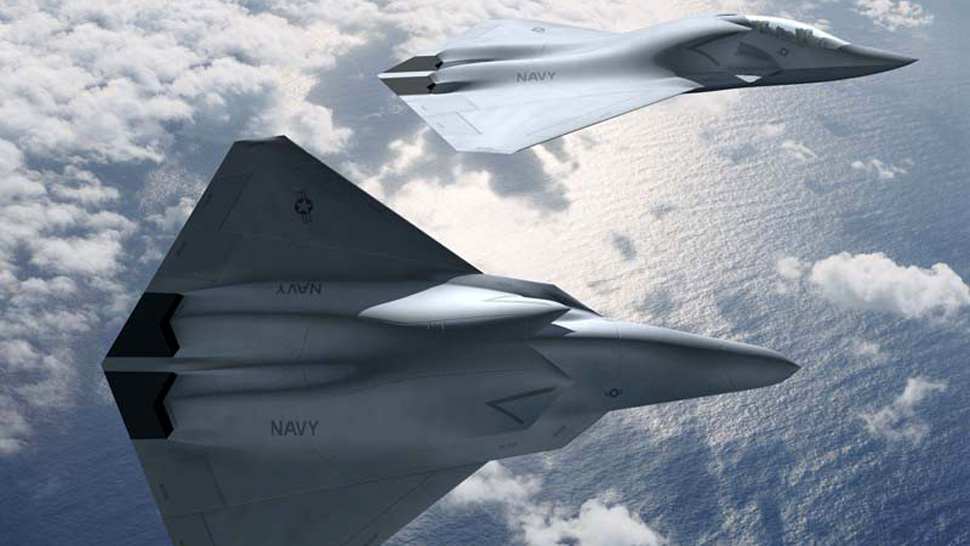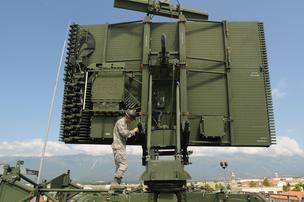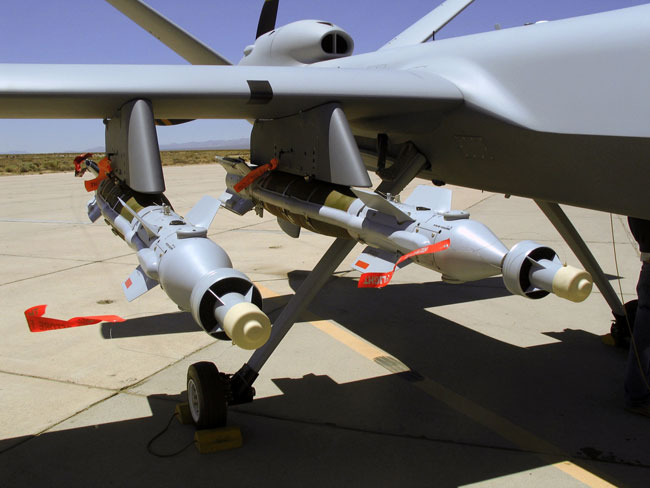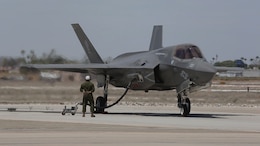F-35 is a flying stealthy computer requiring sophisticated software to be effective.
More questions about F-35 performance | Ottawa Citizen
Report cites continuing software deficiencies in F-35 | The Star Telegram
Flawed software will hobble the first of Lockheed Martin’s F-35
fighters to be called combat-ready, limiting the plane’s ability to drop
bombs, share data with other aircraft and track enemy radar,
Tony Capaccio of Bloomberg news service writes.
He noted that finding is from the Defense Department’s chief weapons tester found.
The U.S. Marine Corps plans to declare its version of the F-35
(different from the version Canada hopes to buy) ready for limited
combat as soon as July, according to the Bloomberg report.
 |
| Block 2B is first weapon capable sytem |
In the Trenches with the F-35 - The American Interest
It takes a lot of money to keep the expensive, delay-ridden F-35
program running. Advocates of the plane, the most expensive program in
U.S. military procurement history, argue that it will render all sorts
of other systems obsolete because the F-35 can do it all; hence,
programs like the
[less expensive, proven on the battlefield] A-10 “Warthog” can be cut and their funding diverted
to the jet.
But it’s far from certain that the F-35 will be as good as promised.
Experts are raising doubts about virtually all of its key features:
- its
stealthiness,
- its agility in dogfights,
- its speed,
- its maximum payload,
and, troublingly,
- its ability to fly close air support missions that
save the lives of soldiers on the ground—the sort of missions that, for
example, the current U.S. campaign against ISIS is based around.
F-35 tests demonstrate Interoperability, Close Air Support | Defense Update:
Developmental
testing of the Block 2B software is expected to be complete in February
2015, earlier than the DOT&E predicted in its 2013 report (May to
November 2015). Moreover, the consolidation of test points from earlier
blocks into 2B testing has accelerated the process, eliminating 840 test
points, equivalent to four months of testing.
The review
highlight concern about the ability of the aircraft to identify hostile
radars, creating ‘significant operational risk to fielded unit’ the
report stated that the necessary software updates will not be available
until November 2015.
Other concerns are with the aircraft unique
‘Distributed Aperture System’ (DAS), providing the pilot a panoramic
view of the aircraft surroundings and automatic threat warning and
identification. The report said DAS still “exhibit high false-alarm
rates and false target tracks, and poor stability performance, even in
later versions of software.”
F-35Bs at the 2014 Miramar Air Show from
SldInfo.com on
Vimeo.
Marine Fighter Attack Squadron 121
(VMFA-121) at Marine Corps Air Station (MCAS) Yuma - is expected to be
the first Marine Corps F-35 unit declared 'operationally ready' by the
end of July 2015. Photo: Lockheed Martin.Marine Fighter Attack Squadron
121 (VMFA-121) at Marine Corps Air Station (MCAS) Yuma – is expected to
be the first Marine Corps F-35 unit declared ‘operationally ready’ by
the end of July 2015. Photo: Lockheed Martin.
The F-35 Just Hit Another Snag - Business Insider
Despite the latest software flaws discovered in the F-35, Lockheed Martin spokesman Mark Johnson told Bloomberg that "2014 was a year of great momentum for the [joint strike fighter] program on all fronts.”
The Marine Corps plans
on announcing that the F-35B, the F-35 variant developed for the
Marines, will be ready for combat operations by July. The F-35C model
for the Navy is expected to be declared combat-ready by the end of the
decade.
However, the F-35A
variant that was developed for the Air Force and US allies has also run
into software problems. In December 2014 it was announced that the because of software issues, the plane would not be able to fire its onboard cannon until 2019.
SNAFU!: F-35 News. They program office has lost control of the message.
On that last point, the F-35 team itself seems to agree, because an
explosive report this week disclosed that it has been fudging the
plane’s performance numbers to bolster the case for more appropriations
funding.
When will there be a Gatling Gun for CAS
A Tale of Two Gatling Guns: F-35 vs. A-10 | Defense Tech
“There will be no gun until [the Joint Strike Fighter’s Block] 3F
[software], there is no software to support it now or for the next
four-ish years,” said one Air Force official affiliated with the F-35
program. “Block 3F is slated for release in 2019, but who knows how much
that will slip?”
The F-35, in its full configuration with the Block 3F software, is
designed to carry a suite of internal and external weapons, including
the GPS-guided Joint Direct Attack Munition, laser-guided Paveway II
bomb, Advanced Medium-Range Air-to-Air Missile and infrared Sidewinder
missile. The [F-35] GAU-22/A is lighter and more accurate than its predecessor, but
with a reduced rate of fire of 3,300 rounds per minute. At that rate,
the F-35 would be out of ammunition in about four seconds, or one or two
bursts of fire.
By comparison, the 30mm, seven-barrel GAU-8/A
Avenger in the nose of the venerable Warthog attack aircraft can hold as
many as 1,174 rounds. It’s configured to fire at a fixed rate of fire
of 3,900 rounds per minute.
Computer glitch prevents US’ most advanced F-35 fighter jet from firing until 2019 – report — RT USA
Computer
glitch prevents US’ most advanced F-35 fighter jet from firing until
2019 – report | Aviation & Air Force News at DefenceTalk
F-35 program office defends gun and sensor - 1/7/2015 - Flight Global
Two
critical close air support systems – a 25mm cannon and an
electro-optical targeting system (EOTS) – will be available on the Lockheed Martin F-35 by 2017 and will meet expectations, say programme officials on 7 January.
The
F-35 joint programme office (JPO) defended both systems against what it
calls “nameless/sourceless/baseless reporting” in recent weeks, but
acknowledged one new development problem for the gun and some
operational limitations for the Lockheed-built EOTS sensor.
Contrary to a report that the
General Dynamics
GAU-22 gun is unable to be fired until 2019, the JPO says it will be
delivered when the Block 3F software becomes operational. That delivery
date is now scheduled in Fiscal 2017 with aircraft built in the ninth
lot of low-rate initial production (LRIP-9).
The JPO says that
operators accepted that timeline for the cannon system in 2005. However,
in 2005, the Block 3F software was supposed to be first installed on
LRIP-5 aircraft delivered in 2013. Software development was subsequently
delayed by four years.
China has the F-35 Design (Maybe?)
Next Big Future: Confirmation that China stole F35, F22 and B2 stealth bomber secrets as early as 2007
China stole Joint Strike Fighter jet designs: NSA document leak
New leaks from former National Security Agency (NSA) contractor
Edward Snowden show China stole the designs for American-built F-35
Joint Strike Fighter.
In a large top-secret document dump, provided by Snowden
to German magazine Der Spiegel,
the extent of the ongoing international cyber warfare between the U.S.,
its allies and the rest of the world has been outlined.
According to Fairfax Media,
one of the confidential documents within the latest leak show Chinese
spies stole "terabytes" of design and military information relating to
the F-35, also known as the Lockheed Martin F-35 Lightning II. The
information was used to assist in the design of China's Chengdu J-20 and
the Shenyang J-31 stealth fighter jets,
as long suspected by the west.
According to a top secret NSA presentation, Chinese cyber spies have
stolen huge volumes of sensitive military information, including "many
terabytes of data" relating to the Joint Strike Fighter (JSF) - also
known as the Lockheed Martin F-35 Lightning II.
China Calls Snowden's Accusations It Stole F-35 Plans 'Groundless' | Military.com
BEIJING -- China dismissed accusations it stole
F-35 stealth fighter
plans as groundless on Monday, after documents leaked by former U.S.
intelligence contractor Edward Snowden on a cyber attack were published
by a German magazine.
The Pentagon has previously acknowledged that hackers had targeted
sensitive data for defense programs such as the F-35 Joint Strike
Fighter, but stopped short of publicly blaming China for the F-35
breach. The Pentagon and the jet's builder, Lockheed Martin Corp., had
said no classified information was taken during the cyber intrusion.
F-35 Lightning II Flight Test Update 14 | Code One Magazine
The previous F-35 Flight Test Update concluded with F-35A test aircraft
AF-3 completing 500 flight hours on 18 March 2013, making AF-3 the
second mission systems test Lightning II to reach this milestone. This
fourteenth installment in the series of F-35 flight testing reviews
presents a large variety of additional milestones for the F-35 test
fleet from a monthly flight record for the F-35 CATBird in March to the
completion of the initial carrier trials for the F-35C in November.
Previously


























